Tribute to Stravinsky's Rite of Spring ( ritenpr )
This is a short film made in response to the NPR article celebrating the 100th anniversary of the Rite of Spring by Igor Stravinsky.
#ritenpr Stravinsky's Rite of Spring - Mint offering on train (a.k.a. "Cyborg Express")
This is a short film made in response to the NPR article celebrating the 100th anniversary of the Rite of Spring by Igor Stravinsky. Play video below (watch in HD mode full screen)
Here are some beind the scenes pics:
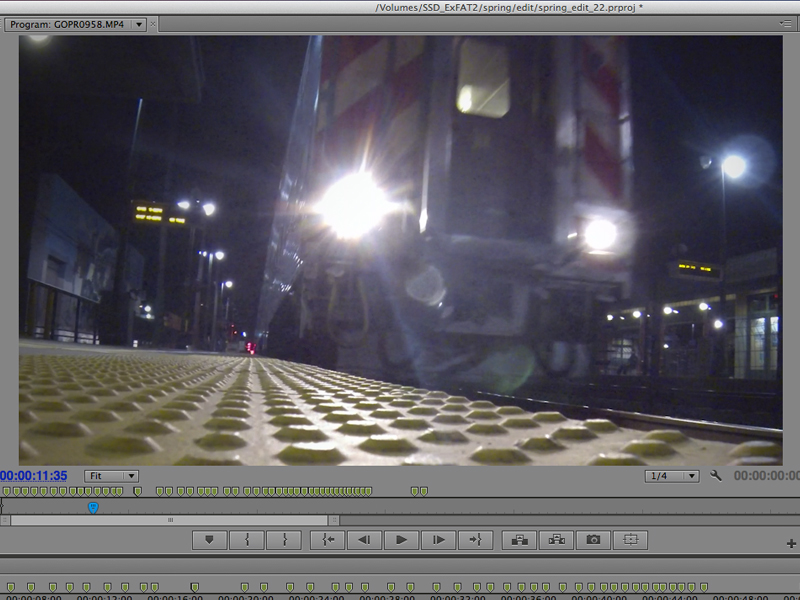
This was one of the scariest scenes to film. The wind from the train actually blew the camera out of the way a bit
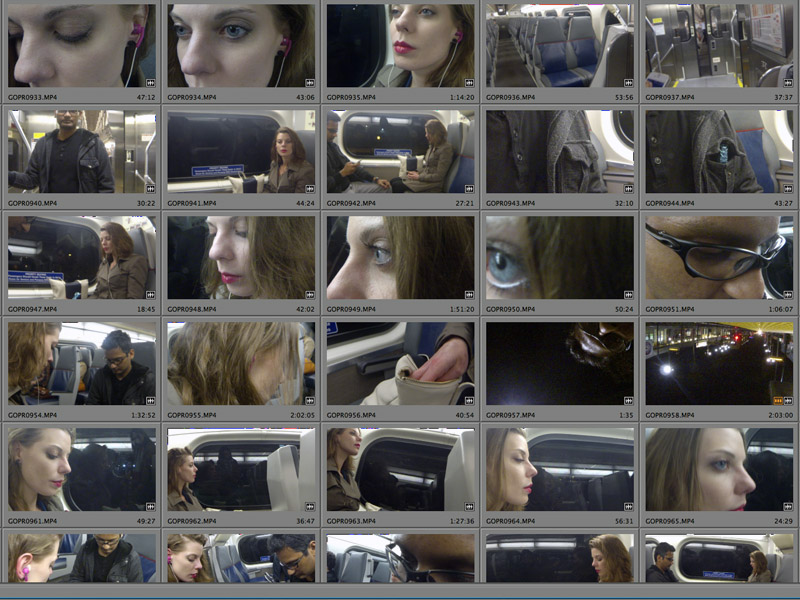
Here's some of the raw footage. Even at the narrowest setting on GoPro, the angle is still quite distorted and focusing upclose was almost impossible so I duct taped a Nikon macro filter set infront of it.
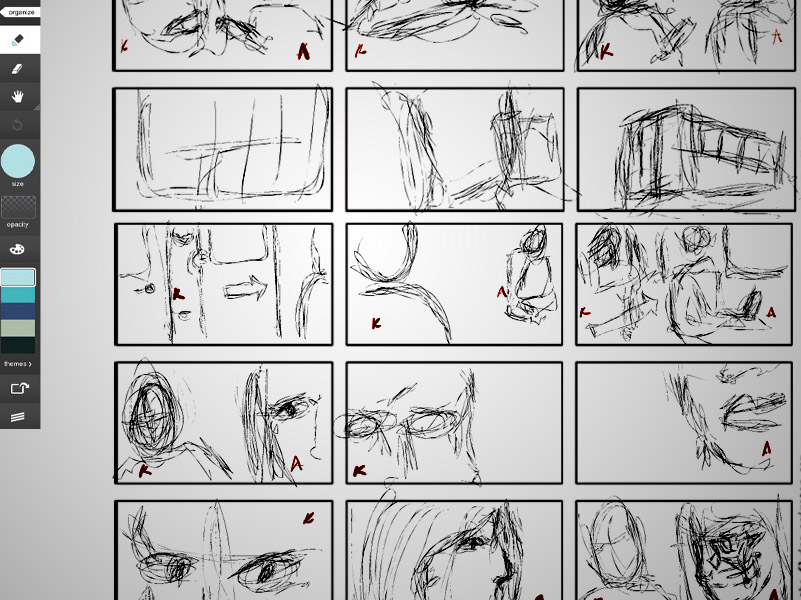
Rough storyboards sketched in Adobe Ideas. Some of the shots had to be changed based on the actual seating layout in the real train. We also had to ask somebody to move to get hold of 4 free seats. (Abbie used her charm for that)
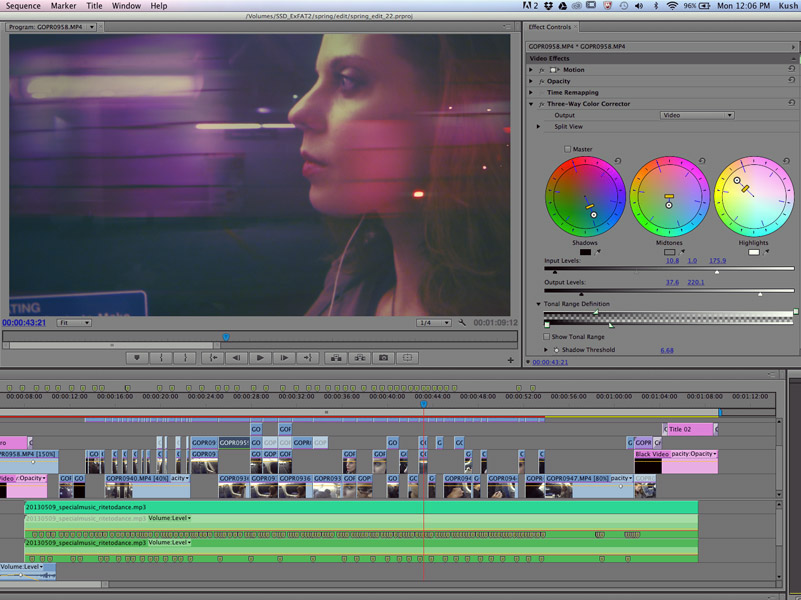
The look acheived with overlaying lights passing by out of the window and using three way color corrector and curves in Premiere Pro. All effects rendered real time with nvidia GPU.
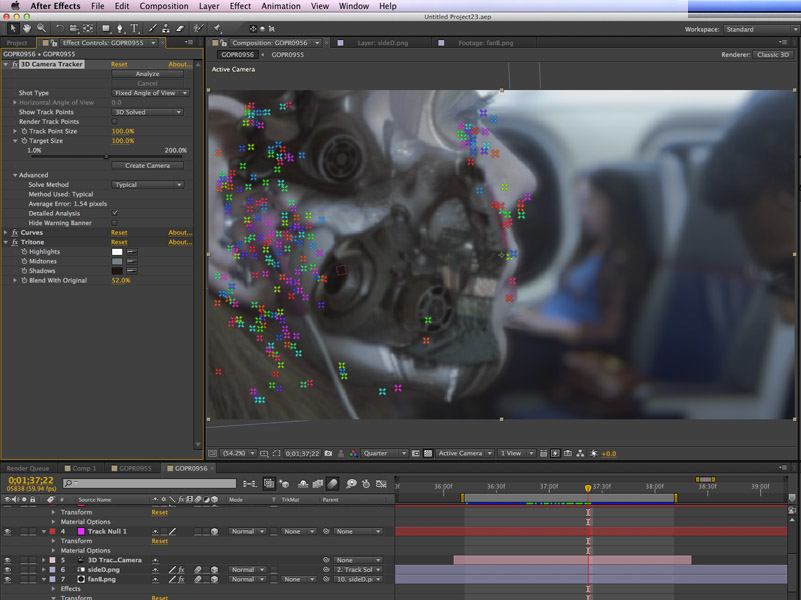
3D tracker to track face. Both the face and camera was moving and the trakers didn't have much to hold on to. I wish I had a biut more time to tweak this further but I had to stick with what ever the tracker came up with becuase the date to submit the video was approaching fast.
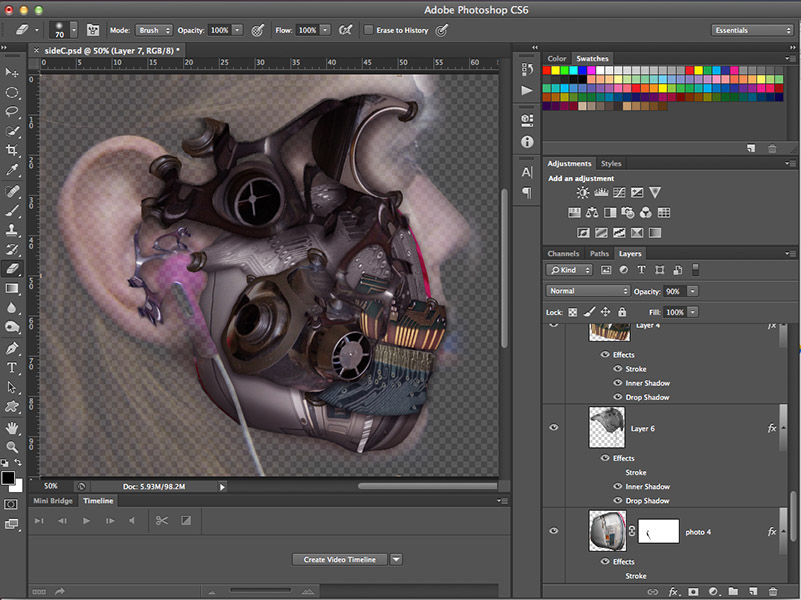
Rather than constructing the cyborg components out of 3dsmax I decided to use real objects for added realism and faster turnaround.
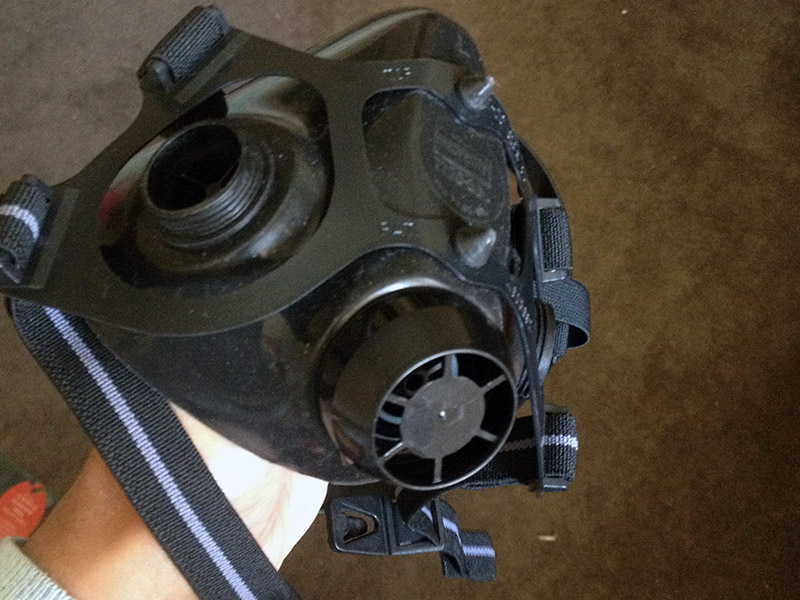

Here's a Q&A about the project overall:
Q: How did this project start?
A: My good friend Robyn likes to forward me interesting articles about science and art quite frequently and one day she sent me the link to the NPR call for submissions. At first I wasn't quite sure if I wanted to do such a thing so she ended up teaming up with a different friend who wanted to interpret it through martial arts etc. That got me thinking, "why does it always have to be about a dance or mediums related to the past in general? Shouldn't we celebrate what it could be after 100 years?" After all NPR said it can be anything as long as we don't mess with the music. So I thought about making a short film.
My first instinct was to bring really dramatic intensity to something ordinary and mundane like cooking breakfast in slow motion. I happened to get hold of a GoPro camera and was in the process of playing around with it's high frame rate shooting. Robyn had the idea about making it a first time meeting between a girl and a boy where the boy is hesitant to break the ice and approach her. But I wanted to maintain the dark, sinister nature of the piece by introducing a sense of danger and anticipation to something unexpected.
Q: So you wanted to bring Stravinsky to the future?
A: Yes, I know the usual plot is about a weak female victim brutally sacrificed by savage tribal characters. Come on, it's 2013 already so let's leave the stereotypes behind. Besides, other than the emphasis on mystery and power, I don't think Stravinsky himself had any plot in mind when he wrote the music. So I wanted to make it powerful, deep, and mysterious yet with a twist.
Q: How well do you know Stravinsky's work or classical music in general?
A: Very little. The first time I ever heard a Stravinsky piece was when I played a very short sound byte on the Encarta multimedia encyclopedia back in the mid 90's. I was totally blown away. At the time I was a teenager who had a crush on this Italian classmate.
A: Very little. The first time I ever heard a Stravinsky piece was when I played a very short sound byte on the Encarta multimedia encyclopedia back in the mid 90's. I was totally blown away. At the time I was a teenager who had a crush on this Italian classmate.
Q: Did she influence you to like Classical music?
A: No, she was actually into heavy metal. So I started listening to the same to try to get her attention or show that we have something in common. That plan didn't really work but I did develop a genuine fondness for the depth and the power of music by bands like Metallica in their peak days. But then when I heard Stravinsky, all I could think was "Wow, this guy has been writing heavy metal music almost a century ago!" Because I thought it had the same heaviness and mad raw power even if it's played with completely different instruments. So while I had a pretty broad taste for music, I only scratched the surface getting to know classical masters. But regardless of that, Stravinsky and certain parts of Rite of Spring in particular certainly left an impression on me.
A: No, she was actually into heavy metal. So I started listening to the same to try to get her attention or show that we have something in common. That plan didn't really work but I did develop a genuine fondness for the depth and the power of music by bands like Metallica in their peak days. But then when I heard Stravinsky, all I could think was "Wow, this guy has been writing heavy metal music almost a century ago!" Because I thought it had the same heaviness and mad raw power even if it's played with completely different instruments. So while I had a pretty broad taste for music, I only scratched the surface getting to know classical masters. But regardless of that, Stravinsky and certain parts of Rite of Spring in particular certainly left an impression on me.
Q: How many people were involved in this project?
A: Just three people including me.
A: Just three people including me.
Q: Are all three of you artists?
A: Aren't we all? I think it was Picasso who said we are all born as artists but most people grow out of it. I think the common thing the three of us have is that childish curiosity and the need to play. Well, Robyn likes to learn playing musical instruments and sketching etc but professionally she's an engineer. Abbie is a bit of a graphic artist and animator but right now I think she's a professional car salesperson or something like that! As for me, well I'm a wannabe artist and musician who's official day job title is "scientist". As you can see, art happens in the modern age in a very different way compared to how it was 100 years ago. Being an artist is more accessible to more people than it has ever been. I of course believe that there's no such thing as good art and bad art. For me, what qualifies as "art" is something that can evoke an emotion or spark a thought. Work like Stravinsky's Rite of Spring are timeless in that sense because here I am 100 years later letting it trigger thoughts, emotions and trying to listen what it's communicating to me. So there's got to be something in it!
A: Aren't we all? I think it was Picasso who said we are all born as artists but most people grow out of it. I think the common thing the three of us have is that childish curiosity and the need to play. Well, Robyn likes to learn playing musical instruments and sketching etc but professionally she's an engineer. Abbie is a bit of a graphic artist and animator but right now I think she's a professional car salesperson or something like that! As for me, well I'm a wannabe artist and musician who's official day job title is "scientist". As you can see, art happens in the modern age in a very different way compared to how it was 100 years ago. Being an artist is more accessible to more people than it has ever been. I of course believe that there's no such thing as good art and bad art. For me, what qualifies as "art" is something that can evoke an emotion or spark a thought. Work like Stravinsky's Rite of Spring are timeless in that sense because here I am 100 years later letting it trigger thoughts, emotions and trying to listen what it's communicating to me. So there's got to be something in it!
Q: How did you go about making the actual video?
A: The concept was developed over instant messaging and the next day after work we shot it in the train during a short 20min ride and back using a small GoPro camera so it didn't attract too much attention or become burden on other passengers. I spent a few after work nights editing it on my laptop with Premiere Pro then I did the special effects in After Effects and Photoshop.
A: The concept was developed over instant messaging and the next day after work we shot it in the train during a short 20min ride and back using a small GoPro camera so it didn't attract too much attention or become burden on other passengers. I spent a few after work nights editing it on my laptop with Premiere Pro then I did the special effects in After Effects and Photoshop.
Q: Is there a deeper story behind the characters in this short?
A: If enough people were interested...
A: If enough people were interested...
[see NPR feature: http://t.co/KESpTYkkaK ]